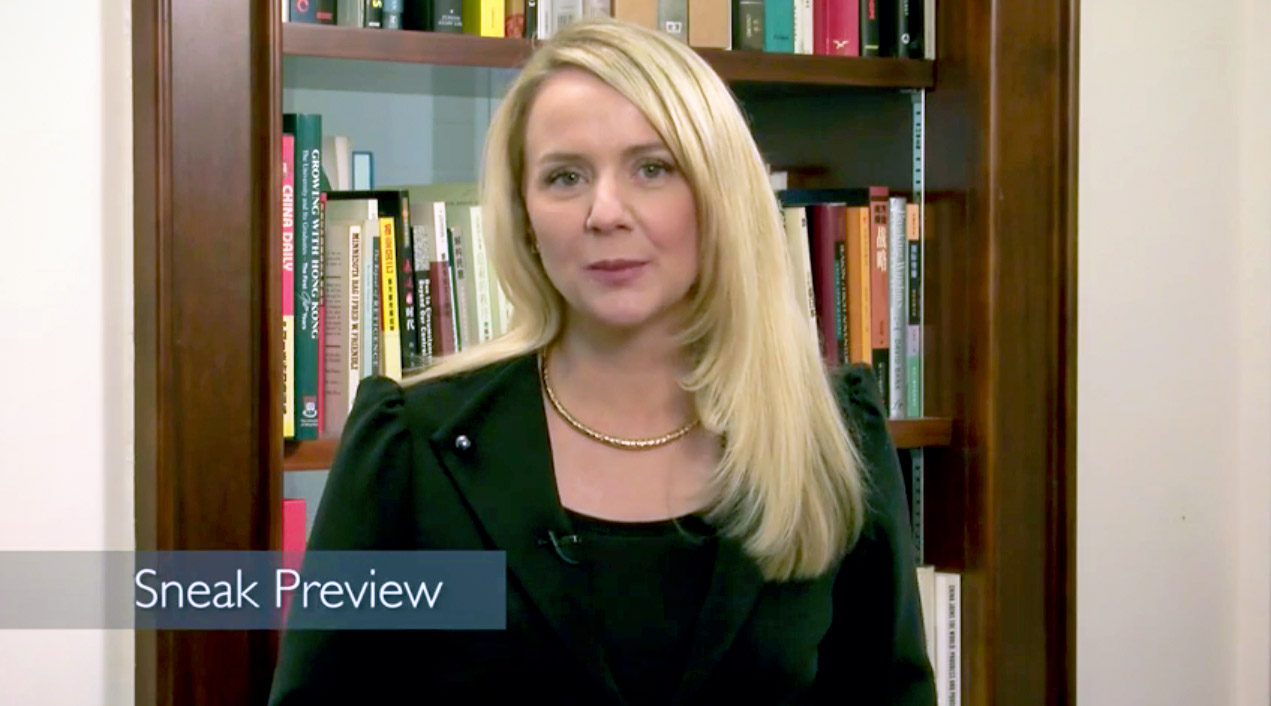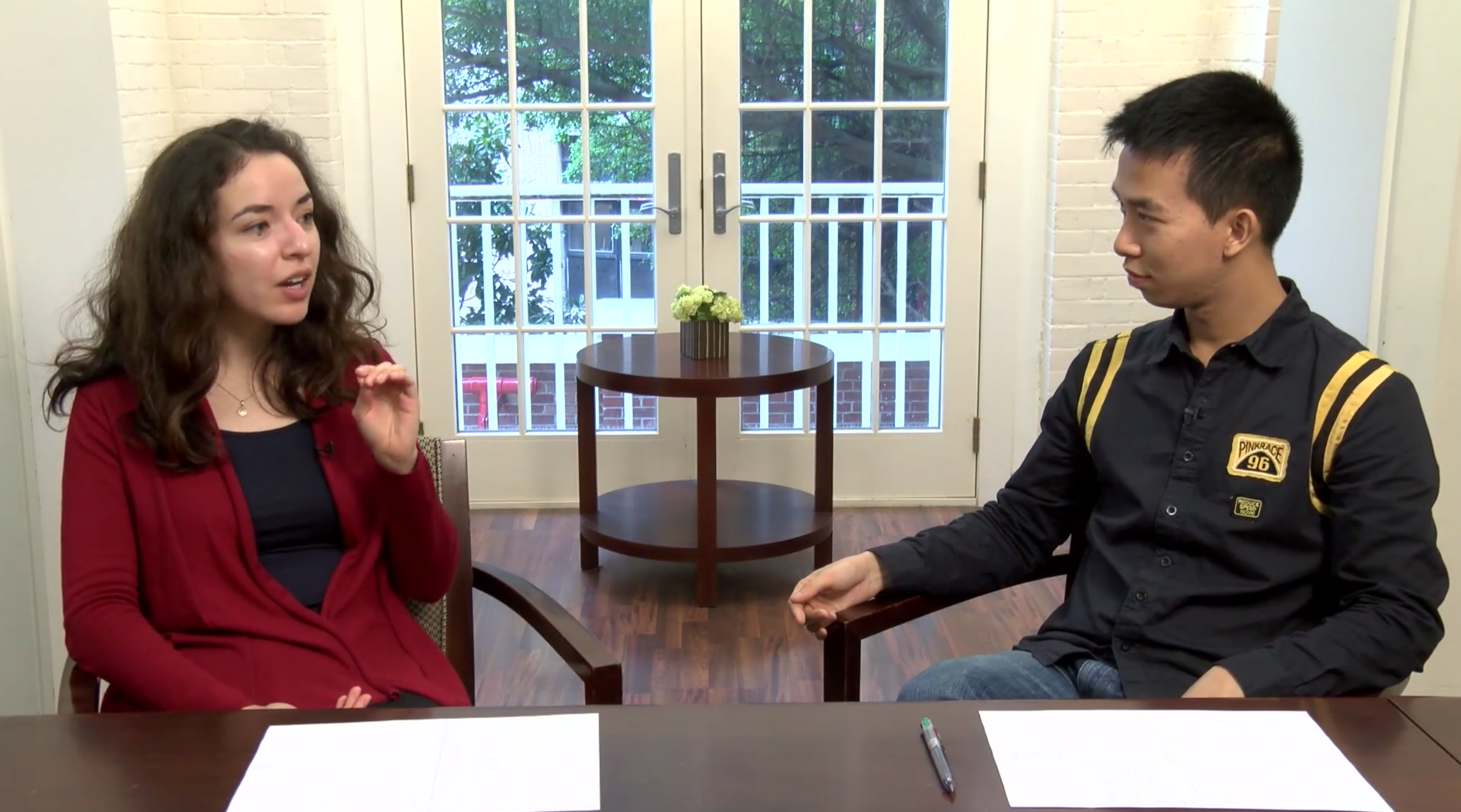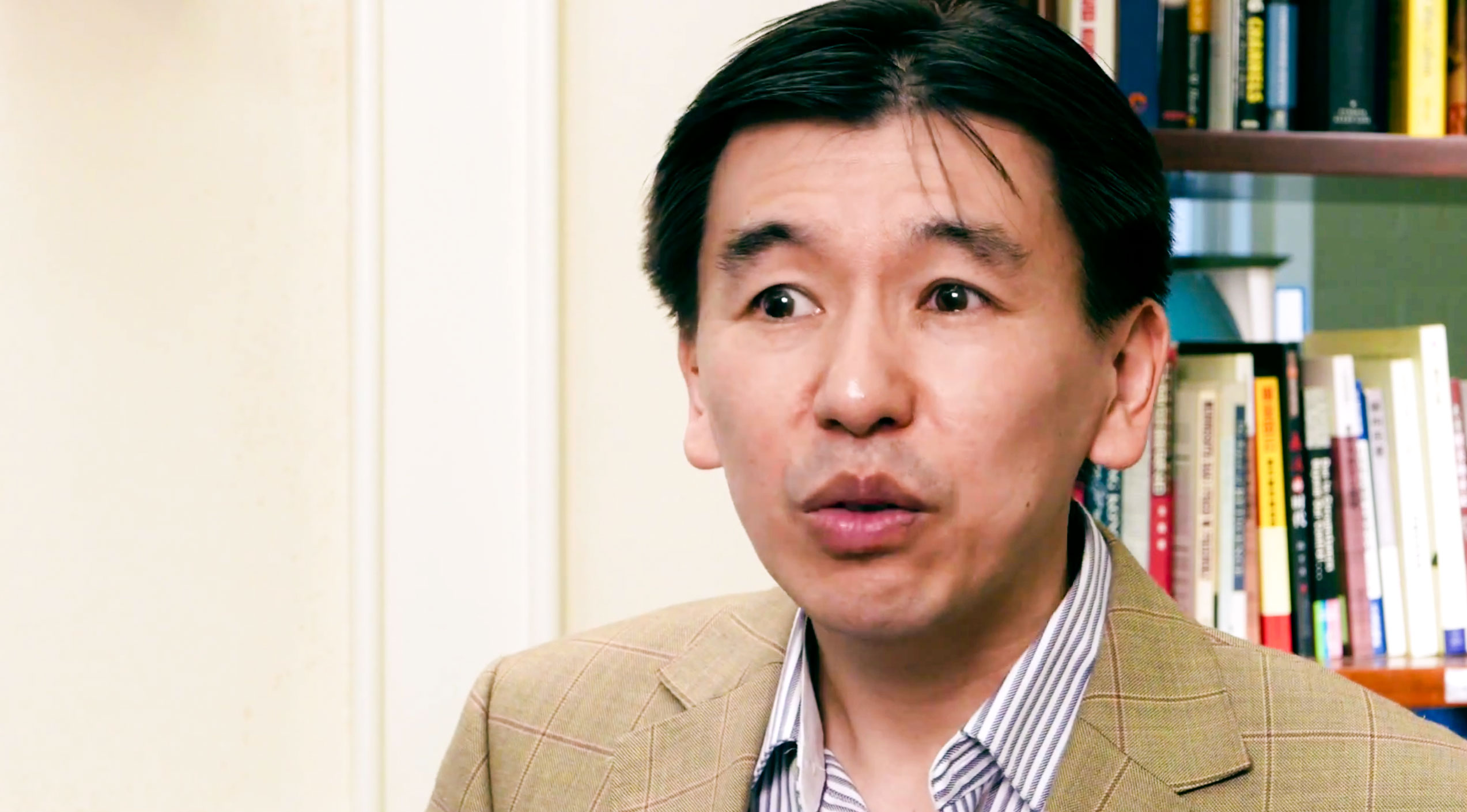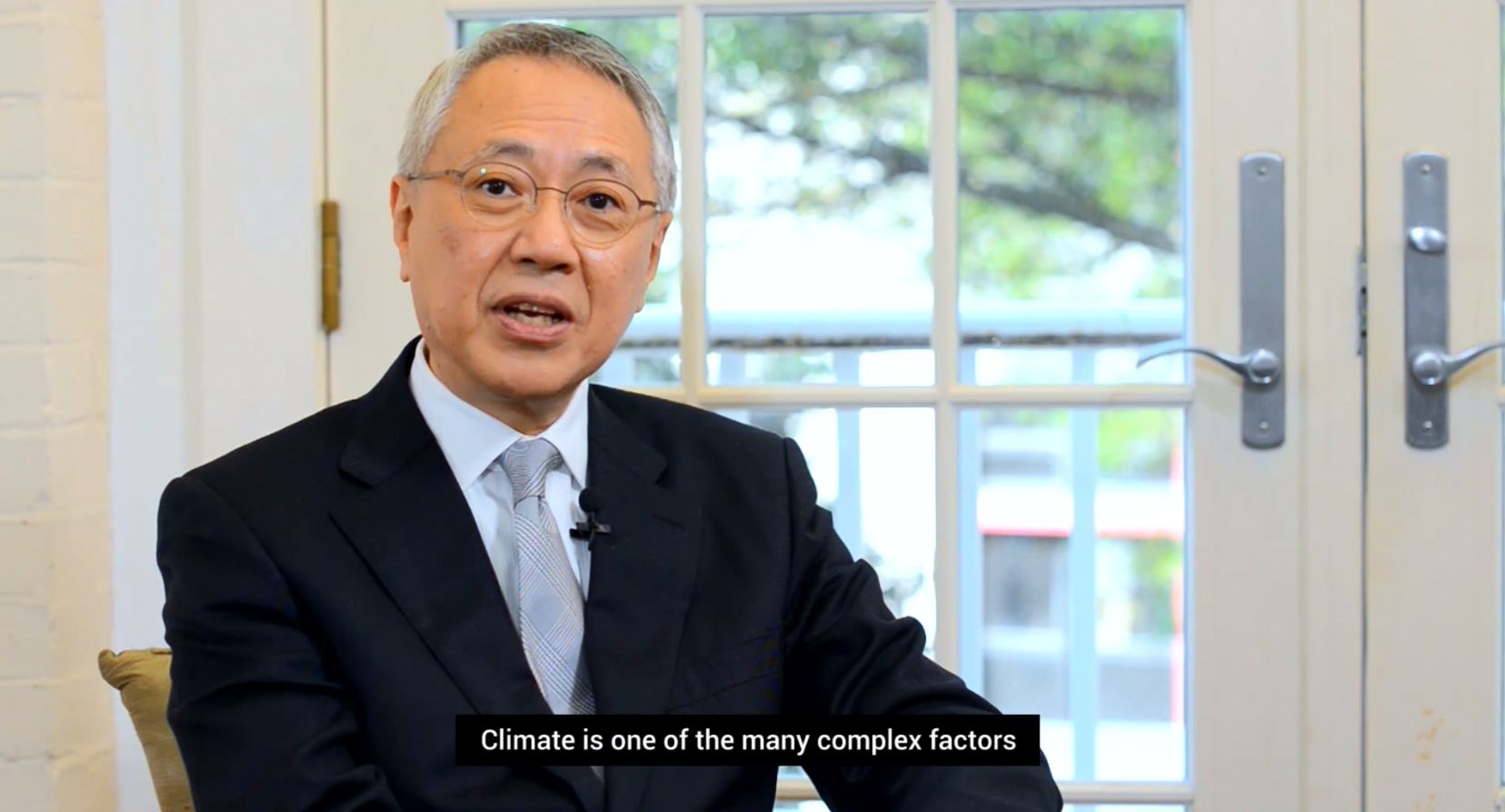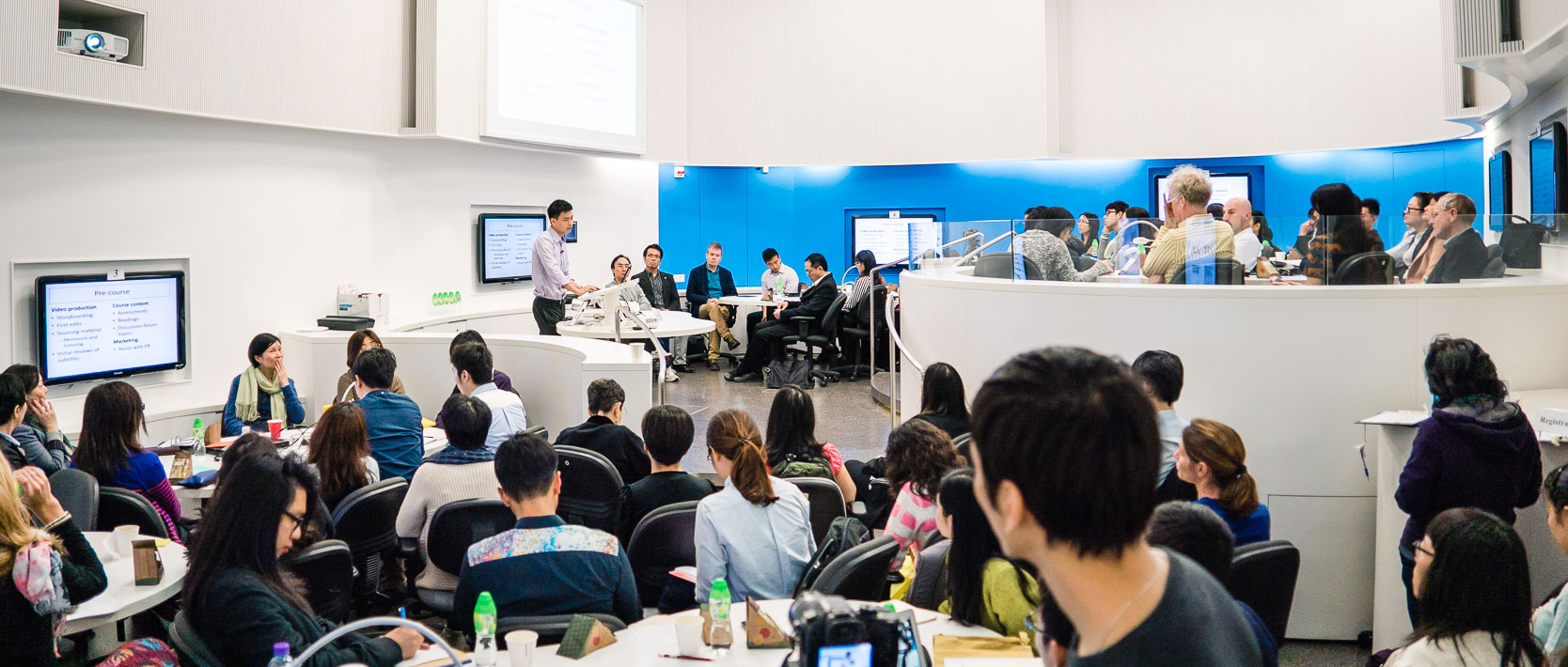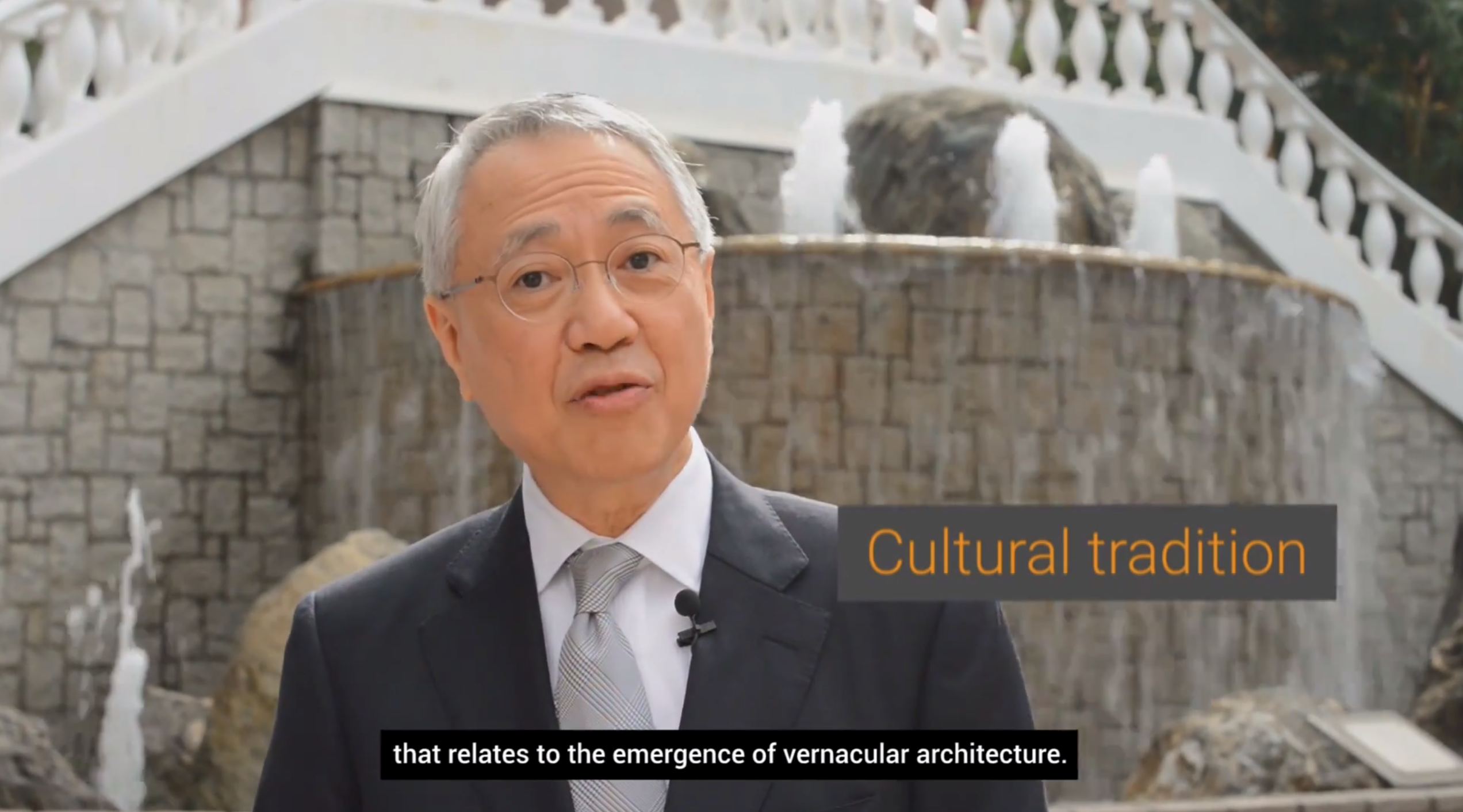HKU04x: Making Sense of News – Sneak Preview 3
To learn editorial decisions, enroll in this free massive open online course now
Click here if you cannot access Youtube
Learn more: Sneak Preview 2 / Sneak Preview 1 / Trailer
HKU04x: Making Sense of News – Sneak Preview 2
Are press releases journalism? Join us in the Making Sense of News. Enroll in this free massive open online course now
Click here if you cannot access Youtube
Learn more: Sneak Preview 1 / Trailer
HKU02.1x: The Search for Vernacular Architecture of Asia – Sneak Preview 4
The choice of materials and construction process all contribute to the meanings of vernacular buildings which extend beyond what can be seen by the naked eye. Week 4 of the course will focus on the relationship between building materials, structures and the associated expertise and rituals in vernacular architecture. The course is free and begins on April 14. Enroll today!
Click here if you cannot access Youtube
Learn more: Sneak Preview 1 / Sneak Preview 2 / Sneak Preview 3 / Trailer
HKU04x: Making Sense of News – Sneak Preview 1
Learn essential critical thinking skills in the age of social media to effectively navigate and make sense of news. Join us in the Making Sense of News. Enroll in this free massive open online course now
Click here if you cannot access Youtube
Learn more: Trailer
HKU02.1x: The Search for Vernacular Architecture of Asia – Sneak Preview 3
How does climate influence the way people build their living environment? Join thousands of learners from around the world to explore this and many other questions related to vernacular architecture. The journey begins on April 14. Enroll in this free massive open online course now
Click here if you cannot access Youtube
Learn more: Sneak Preview 1 / Sneak Preview 2 / Trailer
MOOCs and on-campus teaching and learning
Guest blogger series: Michael Pittman on Coursera Partners Conference 2015
 Dr. Michael Pittman is a Research Assistant Professor at the Vertebrate Palaeontology Laboratory of the Department of Earth Sciences. He is a multi-disciplinary vertebrate palaeontologist whose primary interests are in the evolutionary biomechanics of vertebrates, especially dinosaurs.
Dr. Michael Pittman is a Research Assistant Professor at the Vertebrate Palaeontology Laboratory of the Department of Earth Sciences. He is a multi-disciplinary vertebrate palaeontologist whose primary interests are in the evolutionary biomechanics of vertebrates, especially dinosaurs.In this article I am going to talk about the opportunities and benefits of MOOCs for on-campus teaching and learning at HKU. I will do so by presenting a number of case histories from other universities that were shared at the recent Coursera Partners Conference.
Before I begin I would like to provide some background to my conference experience. At the conference I picked up a few ‘tricks of the trade’ for my own planned MOOC (see Dr. Masato Kajimoto’s insights here) and considered and critically evaluated the conference sessions from my perspective as a younger academic. I was deeply impressed by what has been achieved so far on the Coursera MOOC platform – the amount of high-quality material offered is staggering.The sense of community amongst the Coursera partners was another inspiring aspect of the conference, and it was evident that a number of fruitful institutional collaborations have been formed in this context. For example, the course ‘Create and develop a technology startup’ (‘Créer et développer une startup technologique’) is jointly run by École Polytechnique and HEC Paris of France. However, like most things, MOOCs have room for improvement and there are obstacles to the full leverage of MOOCs (I believe the latter will be when MOOCs become a mainstay of on-campus university education). Dr. Joseph Wu, for example, identified the sustainability of MOOC production as a major issue for universities to further consider. For me, the need for broader communication of the learning value of MOOC education had particular resonance during the conference. This is because the use of MOOCs on-campus has not gained global traction, including at HKU. One reason for this might be because peer-reviewed research on MOOC learning effectiveness is more limited in comparison to research on more traditional multimedia teaching (see insights into multimedia and MOOC teaching methods here). In this article I specifically focus on my conference insights into MOOC-based flipped courses, a key use of MOOCs on-campus. I hope that in reading these words you will also see value in developing this area at HKU.

Professor Grahame Bilbow (left) and Dr. Michael Pittman (right) at the Coursera Partners Conference.
In a MOOC-based flipped course students study MOOC lectures in their own time, but go to class for feedback and discussion sessions. By shifting in-class teaching in this way, students can work through their learning with more direct benefit from their peers and their instructor. These MOOC-based flipped courses typically have a structured online forum too so that students can improve their learning outside of class from a body of students that is much larger than their own on-campus class. During the conference many case histories about this course format were shared, ranging from improvements to the learning experience of students to the cost-benefit for an institution.Below I present a select number of these case histories to illustrate the benefits and drawbacks of this course format:
Dr. Kim Manturuk of Duke University noted that half of their MOOCs have been used to successfully flip related on-campus courses. In some cases their MOOC material had even flipped multiple courses, allowing instructors of other courses to dedicate more time and effort to tutorial, discussion and feedback sessions.
An audience member from the University of Nebraska commented that MOOC materials from other institutions had been used by his university, and that they have paid this forward by providing their own MOOC materials to other universities. This sharing of MOOC materials for on-campus teaching – which is often a sharing of specialist teaching material – is building momentum, and is especially convenient given the video format of lectures. Fellow Coursera partners seem to have generally shared MOOC materials free-of-charge, underscoring the sense of community amongst partners.
At the University of Alberta the MOOC-based course Dino 101 is taught to ~600 undergraduates every year, allowing large numbers of students to learn important biological and geological concepts all the while being inspired by amazing dinosaurs. The University offers two versions of this course to its students: a completely online version where students study MOOC lectures and online reading materials, and a flipped classroom version where online materials are supplemented with fieldtrip and laboratory visits as well as guest lectures. Dino 101 is a wonderful example of large-scale on-campus knowledge dissemination that would have been impossible to do through traditional teaching methods. However, larger class numbers require additional course infrastructure to be in place e.g. the training of teaching assistant to lead small groups of students, so tutorial- and discussion-based learning can be scaled up.
Regarding the cost-benefit of this course format, Dr. Annemarie Zand Scholten of the University of Amsterdam said that government funding changes in the Netherlands inspired her University to use MOOCs as a cost-effective way of teaching selected courses. This allowed the university to retain – rather than close – popularpremaster programs in social sciences and child development and educational sciences.
Prof. Roger Cheng shared that HKUST has successfully used MOOC-based on-campus education to recruit exchange students that had previously been ineligible because of term time incompatibility. From this perspective the on-campus use of MOOCs can have substantial benefits towards the internationalisation goals of a university. On the flip side, Prof. Roger Cheng highlighted some shortcomings of MOOC-based on-campus teaching and learning, including the relatively short length of MOOC lectures and the need for students to adapt to more active learning practices. This mode of education needs support from well-structured tutorials, discussions, further reading and coursework and even supplemental in-class lectures as well. MOOCs can simply be used as a supplemental resource to traditional on-campus courses but this negates the benefits of MOOC-based course flipping. In either case, time and training must be given to students to adapt to the new active learning style which requires a higher degree of self-motivation.
Ms. Valentina Todoro of Boccini University, Italy argued that effective flipped courses benefit from a customised teaching environment e.g. moveable furniture and a more flexible and capable projection setup. Her view was shared by her institution which has been renovating classrooms for this reason. HKU has examples of comparable classroom facilities that have been used for non-MOOC based flipped classrooms – these facilities would be an ideal platform for experiments involving MOOC-based flipped classrooms in the future.
MOOCs have great potential to improve multiple facets of on-campus teaching and learning at HKU, particularly when used in flipped classroom scenarios. MOOC-based flipped courses require careful planning and at larger class sizes require greater investment in teaching assistant training to scale tutorial- and discussion-based learning as well as coursework marking (and feedback sessions). Online assessments might also be necessary to develop and if these require written answers then peer-marking might also be required. However, if these challenges can also be overcome at HKU, I see a number of opportunities and benefits for the university, including:
- More tutorial and discussion sessions to consolidate learning.
- A new way of learning more suited to the younger generation.
- A big variety of courses than might otherwise be offered.
- Greater inter-institutional collaboration.
- Knowledge dissemination to more students.
- A means to retain important specialist courses, despite small class sizes.
Broadening Horizons: Knowledge gained, experiences shared and lessons learned from HKU’s first MOOC Epidemics

Six months ago, HKU launched its first MOOC HKU01x Epidemics with over 10,000 enrolled students and 1,226 certificates of completion earned. Comparing this MOOC learner certification rate of 12% with the average of around 5% (Jordan 2014), a picture of a successful course begins to emerge. To celebrate that success, the E-Learning Pedagogical Support Unit (EPSU) led a seminar presenting varied perspectives from some of the major stakeholders in designing and running Epidemics.
 The seminar attracted a full-house and Dr. Joseph Wu, who led Epidemics, fittingly spoke first, sharing the professors’ perspective. And what a perspective it was, with 11 professors – all top-tier scientists from the field of infectious disease research – delivering lectures on the MOOC, along with invited experts such as Professor Peter Piot (from the London School of Hygiene & Tropical Medicine) who spoke in one of the course’s highly topical panel discussions. In addition to the contributions of the professoriate team, Joe highlighted two further key factors: HKU School of Public Health’s influenza research program, with its highly interdisciplinary approach; and long-standing collaboration in terms of research and teaching between the school and other world-leading institutions such as Harvard’s Center for Communicable Disease Dynamics.
The seminar attracted a full-house and Dr. Joseph Wu, who led Epidemics, fittingly spoke first, sharing the professors’ perspective. And what a perspective it was, with 11 professors – all top-tier scientists from the field of infectious disease research – delivering lectures on the MOOC, along with invited experts such as Professor Peter Piot (from the London School of Hygiene & Tropical Medicine) who spoke in one of the course’s highly topical panel discussions. In addition to the contributions of the professoriate team, Joe highlighted two further key factors: HKU School of Public Health’s influenza research program, with its highly interdisciplinary approach; and long-standing collaboration in terms of research and teaching between the school and other world-leading institutions such as Harvard’s Center for Communicable Disease Dynamics.
 Dr. Chao Quan spoke next about his role as lead TA in Epidemics, sharing the support and coordination perspective. Chao also spoke of inter-professional collaboration between the Li Ka Shing Faculty of Medicine and EPSU colleagues and additionally highlighted how TAs can support professoriate staff during course preparation – for example in helping to prepare short lecture scripts for the MOOC instructional videos – and during the course run by being active in moderating the discussion forums.
Dr. Chao Quan spoke next about his role as lead TA in Epidemics, sharing the support and coordination perspective. Chao also spoke of inter-professional collaboration between the Li Ka Shing Faculty of Medicine and EPSU colleagues and additionally highlighted how TAs can support professoriate staff during course preparation – for example in helping to prepare short lecture scripts for the MOOC instructional videos – and during the course run by being active in moderating the discussion forums.
Two instructional designers from EPSU were up next. Dr. Jingli Cheng considered the learners’ perspective, sharing some fascinating initial results gleaned from Epidemics entrance and exit surveys, with the following highlights:
- A score of 4.6/5 in terms of overall satisfaction with the quality of the course
- 92% of participants would recommend the course to others
- 53% of those earning a certificate intend to include it on their resume
- US learners were the most represented on the course (23.2%) with Hong Kong in second place with 11.2%
- A detailed analysis of the raw learning data revealed some interesting findings about the effectiveness of course materials
Darren Harbutt followed Jingli, presenting the instructional design (ID) perspective. Darren outlined the ID approach for Epidemics and contrasted it with the slightly different roles assumed in other upcoming HKU MOOCs. The other main takeaways from Darren’s input focused (once again) on the benefits of inter-departmental collaboration and the importance of adaptive and responsive workflows.
Professor Ricky Kwok brought the event to a close outlining how HKU is leveraging MOOCs to feed forward the insights gained into the bigger E-learning picture and highlighting once again the power of collaboration, within HKU and between institutions to help promote sustainable MOOC development and ultimately achieve the outcome of improved student learning.
Overall, a timely and well-received seminar and a moment for all those involved to reflect on the successes of the past while considering future improvements, with collaboration and teamwork emerging as key themes. Have you registered yet for the second iteration of Epidemics?
References
Jordan, K. (2014). Initial Trends in Enrolment and Completion of Massive Open Online Courses. The International Review of Research in Open and Distance Learning, 15(1), 133-160.
Resources (HKU Portal login required)
Presentations in PDF: Dr. Joseph Wu / Dr. Chao Quan / Dr. Jingli Cheng / Darren Harbutt / Professor Ricky Kwok
HKU02.1x: The Search for Vernacular Architecture of Asia – Sneak Preview 2
How does cultural tradition relate to the emergence of vernacular architecture?
How do people build places to fulfill their needs and aspirations?
Join us on April 14, 2015 in the Search for Vernacular Architecture to find out.
Enroll in this Massive Open Online Course on edX.
Click here if you cannot access Youtube
Learn more: Sneak Preview 1 / Trailer
Working towards sustainable development of MOOCs
Guest blogger series: Joseph Wu on Coursera Partners Conference 2015

 Dr. Joseph Wu is an Associate Professor at the School of Public Health, Li Ka Shing Faculty of Medicine. His primary research is in influenza epidemiology and control, particularly focusing on pandemic preparedness and response. The MOOC developed by his team, Epidemics, attracted over 10,000 enrollees in its first offering.
Dr. Joseph Wu is an Associate Professor at the School of Public Health, Li Ka Shing Faculty of Medicine. His primary research is in influenza epidemiology and control, particularly focusing on pandemic preparedness and response. The MOOC developed by his team, Epidemics, attracted over 10,000 enrollees in its first offering.
I led the production of HKU’s first MOOC Epidemics which was launched on the edX platform in September 2014. In this Coursera meeting, I participated in one of their design labs to exchange experience and views about MOOC production with other MOOC developers (whom I presumed were mostly using the Coursera platform). The facilitator from Coursera asked us to share a few pain points in our MOOC development and operations. It turned out that my major concern was not quite among the top concerns from others.
The points that we discussed most were real-time management of questions and complaints from learners, justification of the value of MOOCs to senior management in universities, the lack of beta-testing support, etc. These are factors that are geared towards learner experience, visions and strategies for MOOC among universities, and the design of MOOC platforms. My major concern was more about the seemingly unrecognized burden and stress borne by the in-house MOOC production team members who are often graduate students and research staff of the MOOC developer drafted to venture into this unchartered territory of MOOC education. To them, many aspects of MOOC production such as copyright clearance, sourcing for graphics and animations, filming, video assembly and editing, translation, and beta-testing are not really their primary interests, expertise or responsibilities. Furthermore, given that most institutions are still trying to position themselves in this new realm of MOOCs, there is no or very little existing in-house support (in terms of both technical expertise and financial resources) readily available to help the team with MOOC production. My impression is that with a few exceptions such as Rice University and John Hopkins University, most universities have not yet figured out clearly how MOOC will be integrated into their teaching and learning strategies. Without a consensus on the value and cost of MOOC within an institution (or even a department), it is difficult to have a fair and objective assessment of students and staff involved in MOOC production and operations in their performance evaluation. The value and cost of MOOCs themselves are difficult to assess. The requirements and outcomes for MOOCs vary substantially depending on their nature and scope. For example, teaching computer programming would presumably be less demanding on speaking techniques and illustrative graphics but more demanding on real-time interactions and tutorial, while teaching history would require captivating eloquence and graphics that we expect in a BBC or CNN documentary program. On outcomes, computer programming MOOCs tend to have a lot more learners than MOOCs on history, so using the number of enrollees as a performance metric (which is often done for showcasing popularity) is unlikely to be fair when comparing MOOCs from different disciplines. These are issues that need to be addressed upfront in order for the production of MOOCs within an institution to be sustainable.

